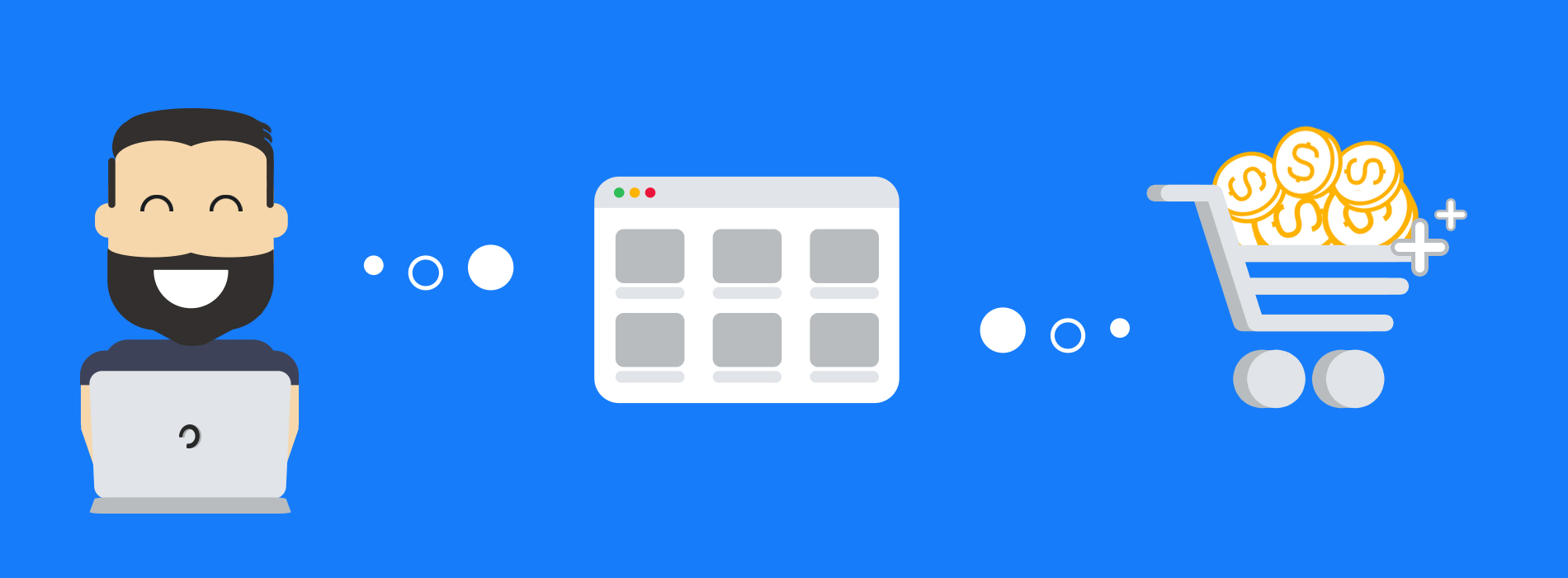Understanding the purchasing behaviour of a target market when using behavioural segmentation is essential for businesses, as it helps them to develop marketing strategies that will be effective in convincing potential customers to buy their products. This information allows businesses to create the correct campaigns at the right time and tailor the ecommerce customer journey in order for online brands to boost sales and see profits – all while reducing cart abandonment rates.
Here we explore the topic of purchase / buying behaviour to help you to target a growing and ever-evolving online audience.
What Is Buying Behaviour?
Buying behaviour – synonymous with the term “consumer purchasing behaviour’ – refers to the steps (or actions) taken by consumers before buying a product or service, both online and offline.
This process may include online research of a product, seeking out online reviews via social media, comparing the online version of a product with the same product in-store, and a whole variety of other actions connected to ultimately making a purchase – whether this concerns location, timing, spend, or all of these elements.
Buyer behaviour – or purchasing behaviour – should be the driving force behind any marketing process as a form of customer behaviour prediction, especially for ecommerce where you are able to monitor, edit and control the customer journey depending on the consumer.
What Is Purchasing Behaviour in Ecommerce?
Purchasing behaviour is the psychological and social processes that people go through when they decide to purchase a product or service.
Purchase behaviour-based segmentation means to distinguish how different customers behave, with social proof, taking into account the trends and processes of how they ultimately purchase. Purchasing behaviour can help us to understand:
- How different customers decide and approach the purchase decision.
- The difficulty and/ or ease of the purchasing process.
What Is Segmentation In Ecommerce?
Segmentation is the process of dividing a market into smaller groups of consumers with similar needs or characteristics. By segmenting the market, businesses can tailor their marketing efforts to better meet the needs and preferences of specific consumer groups. This can be more effective than trying to appeal to the entire market with a one-size-fits-all approach.
One key aspect of segmentation based on purchasing behaviour is the need to understand the ecommerce customer journey. The customer journey is the series of steps that a consumer goes through when considering and purchasing a product or service. By understanding the customer journey, businesses can identify the key decision points that influence a consumer’s purchasing behaviour and develop marketing strategies to influence those decision points, all aiming towards customer loyalty.
What Are The 4 Types of Customer Buying Behaviour?
Although it’s important to have your key target audience in mind in terms of branding and products, ecommerce needs to be appropriate and accessible for a variety of consumers for your brand to be deemed successful in today’s competitive online market. Some consumers are more likely to make purchases under certain conditions than others, and so it’s important to pay attention to different customer attributes to understand their buying behaviour so that you can segment your audiences effectively.
Consumers can fall under a variety of factors, including demographics like:
- Age (Generations e.g. Gen X, Millennials etc.)
- Sex/ Gender
- Cultural background
And socio-economic factors including:
- Income level / Employment status
- Living conditions
It’s important to grasp this concept before you can begin using behavioural segmentation further, into the main types of purchasing behaviours and understand when and how customers make a purchase. The four primary types of consumer behaviours are:
1. Complex Buying Behaviour
Complex buying behaviour occurs when customers make certain purchasing decisions that involve high levels of comparisons (or browsing among brands). In this case, the customer is highly involved in the buying process and carries out thorough research, sometimes resulting in browse abandonment, before the purchase due to this high risk category. This type of purchasing behaviour tends to occur when buying an expensive item or service such as a car, a mortgage for a house, or a long-haul trip (according to online travel trends).
2. Dissonance-Reducing Buying Behaviour
This kind of buying behaviour happens when a consumer is highly involved in the purchase of an item, much like complex buying behaviour, but they have a hard time pinpointing the difference between various brands – we can recognise this behaviour as a form of choice paralysis. With dissonance-reducing buying behaviour, consumers seek out information to help them identify the key differences among brands. This helps them align themselves with the right product or brand that best suits their needs.
3. Habitual Buying Behaviour
Habitual buying behaviour occurs when a consumer’s mental involvement in the purchase is low, and differences between potential brands are small. Consumers in this case usually buy because the product is familiar and ‘’safe’’ in that the risk of disappointment is unlikely. An example of this mode of buying behaviour would be when we purchase everyday products, e.g. your usual shampoo, a loaf of bread etc., and can be attributed to customer loyalty segmentation.
4. Variety-Seeking Customer
Variety seeking buying behaviour is when consumers want to buy different products and services repetitively for the sake of curiosity or change, demonstrating a lower level of mental involvement and risk. For example, with this mode of intent you may buy a candle without putting much thought into it. Next time, they will choose another brand to change the colour or the scent.
Why Use Segmentation Based On Purchase Behaviour?
Once a business has segmented its market based on purchasing behaviour, it can then develop targeted marketing campaigns to reach specific consumer groups. For example,when we look at online apparel shopping statistics, a business selling wedding dresses might develop a marketing campaign targeting brides-to-be, while a business selling everyday clothing might develop a campaign targeting working professionals.
Another example may be a business selling high-end consumer electronics – they might segment its market based on the customers’ needs and preferences for specific features and benefits. It might then develop targeted marketing campaigns to reach consumers at key decision points, such as when they are researching potential purchases or when they are considering making a purchase.
Customer Journey Segmentation
Segmentation based on purchasing behaviour can also be used to optimise the customer journey. By understanding the needs and preferences of specific consumer groups, businesses can design products and services that better meet the needs of those groups and provide a more personalised customer experience.
For example, a business selling online courses might segment its market based on consumers’ learning styles and preferences, and then develop courses that are tailored to those needs. This can help to increase customer satisfaction and loyalty, and ultimately drive sales.
Speak to an expert
Learn how to convert your online audience into revenue with our experts.


Casey Turnbull
Casey is a Fashion Journalism graduate & ecommerce marketing executive at SaleCycle. Casey is committed to producing high quality content backed by in-depth research and data. She has experience developing content in a range of sectors including fashion, ecommerce and sports.
![What Is Purchase Behaviour Segmentation? [With Examples]](https://www.salecycle.com/wp-content/uploads/2020/03/customerbehaviour.png)






![Valentine’s Day Ecommerce Tips and Trends [2024 Strategy]](https://www.salecycle.com/wp-content/uploads/2019/01/valentines-ecommerce-1.png)



![How SaleCycle helped Vodafone increase their online sales by an additional 2,000 additional sales per month [Extended Version]](https://www.salecycle.com/wp-content/uploads/2023/08/vodafone-banner.webp)






